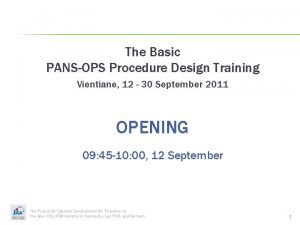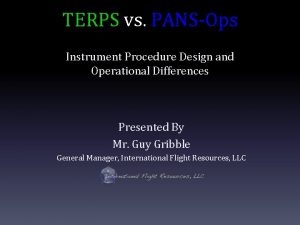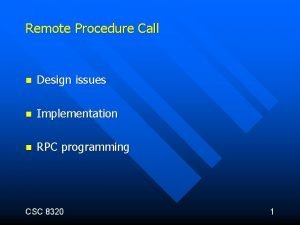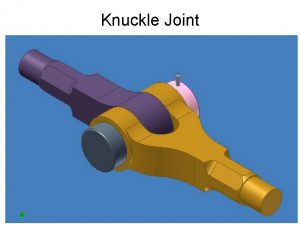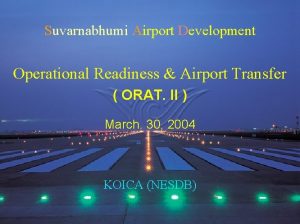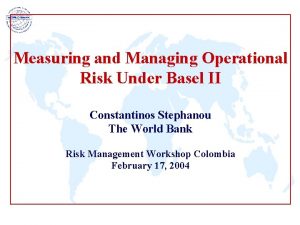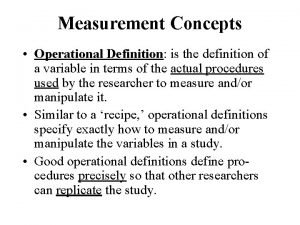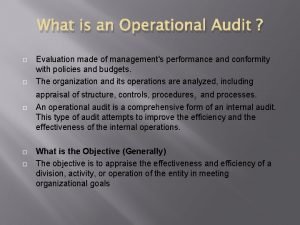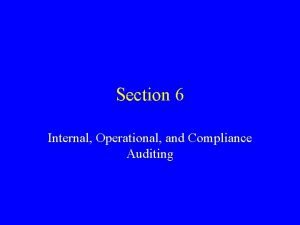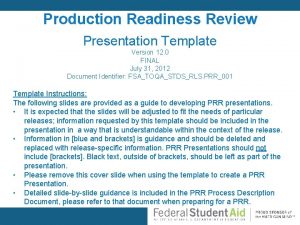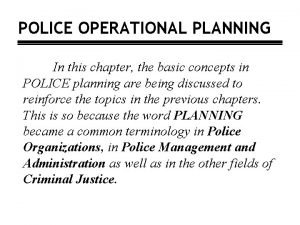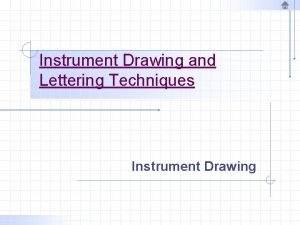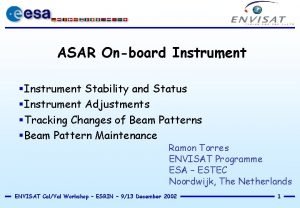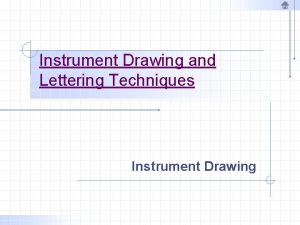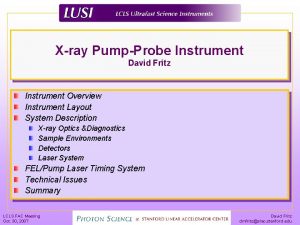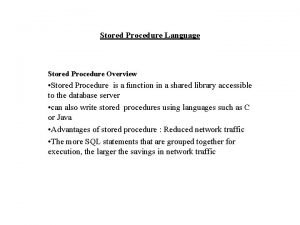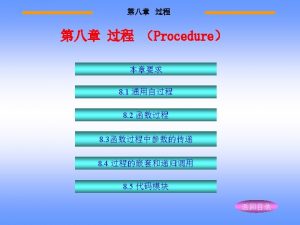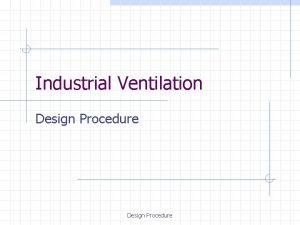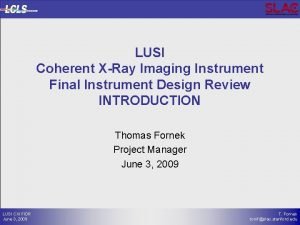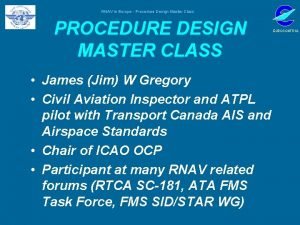TERPS vs PANSOps Instrument Procedure Design and Operational
















































- Slides: 48

TERPS vs. PANS-Ops Instrument Procedure Design and Operational Differences Presented By Mr. Guy Gribble General Manager, International Flight Resources, LLC

TERPS vs. PANS-Ops They Are The Same, Only Different Departures Holding Arrival Maneuvering Approaches Missed Approaches

TERPS vs. PANS-Ops They Are The Same, Only Different Physics, Aerodynamics, Mathematics Units of Measure US Customary Units vs. Meters Conversions ? Rounding of Numbers Fix Tolerances and Accuracy Flight Technical Errors

TERPS vs. PANS-Ops Who is In Charge Here ? ü State (Country) Aeronautical Information Publication, AIP Flight Check, Maintain Publish, Revise ü Design Criteria Standard design development Role of the Procedure Designer Pilot operational procedures ü ICAO, International Civil Aviation Organization SARPS vs. Documents

TERPS vs. PANS-Ops Where Does This Data Come From ? • State (Country) • Commercial Provider • WGS-84 Compliant ? Airport Country Somewhere ?

Russia China India Reproduced with permission of Jeppesen Sanderson, Inc. Not to be used for navigation.

TERPS vs. PANS-Ops Standard Instrument Departure X “Normal” Operations X Maintain the Ground Track X Maintain the Required Climb Gradient X X X

TERPS vs. Pans-Ops vs. FAR 25 Standard Instrument Departure • Vertically Speaking MSA FL t. A e e F 500 1, Departure End Of Runway DER 35 Ft ? 15? 5 M

TERPS vs. PANS-Ops Standard Instrument Departure • If straight out will not work… X X X Climb faster over obstacle Turn away from obstacle Keep in sight, “See and avoid” Climb in a safe sector away from obstacle Speed limiting Combinations of any of the above X X X

TERPS vs. PANS-Ops Standard Instrument Departure • Climb Faster Over Obstacle MSA 152 Feet per NM OCS Requires 350'/NM 48 Feet per NM ROC Until Reaching MSA 200 FEET PER NM C O %M . 8 IS O 2. 5% Maintain 4. 3% Until Reaching 1700 MSL 35 Ft ? DER 5 M % MSA 3. 3

TERPS vs. PANS-Ops Standard Instrument Departure • Turn Away From Obstacle ≈ 2 NM Initial Climb Area ≈ 3. 5 KM 15˚ Splay 500' Area 1

TERPS vs. PANS-Ops Standard Instrument Departure • Turn Away From Obstacle ≈ 2 NM Initial Climb Area ≈ 3. 5 KM 15˚ Splay 500' Area 1

TERPS vs. PANS-Ops Standard Instrument Departure, TERPS • Keep in Sight and Tell Pilot to "See and Avoid" X Visual Climb Over Airport Hazard Beacons on Take Off Minimums top of hill to the east 800/2 clearly visible or Take Off Minimums 600/1 15˚ MAX

TERPS vs. PANS-Ops Standard Instrument Departure, TERPS • Climb in a Safe Sector 25 or 46 NM Diverse Departure Evaluation No Departure Turns East 15˚ MAX X

TERPS vs. PANS-Ops Standard Instrument Departure, PANS-Ops • Climb in a Safe Sector X

TERPS vs. PANS-Ops Standard Instrument Departure, PANS-Ops • Climb in a Safe Sector No Turns Eastbound X

TERPS vs. PANS-Ops Standard Instrument Departure • “Minimum Safe Altitude”, MSA TERPS Reproduced with permission of Jeppesen Sanderson, Inc. Not to be used for navigation.

TERPS vs. PANS-Ops Standard Instrument Departure • “Minimum Sector Altitude”, MSA PANS-Ops Reproduced with permission of Jeppesen Sanderson, Inc. Not to be used for navigation.

TERPS vs. PANS-Ops Standard Instrument Departure • “Minimum Safe Altitude”, MSA PANS-Ops Reproduced with permission of Jeppesen Sanderson, Inc. Not to be used for navigation.

TERPS vs. PANS-Ops Holding • Timing PANS-Ops >14, 000 = 1. 5 Minute ≤ 14, 000 = 1 Minute TERPS

TERPS vs. PANS-Ops Holding • Speeds PANS-Ops >34, 000 = IMN. 83 >20, 000 ≤ 34, 000 = 265 KIAS >14, 000 ≤ 20, 000 = 240 KIAS ≤ 14, 000 = 230 KIAS >14, 000 = 240 265 >6, 000≤ 14, 000 = 220 KIAS 230/210 KIAS ≤ 6, 000 = 210 200 KIAS TERPS

TERPS vs. PANS-Ops Holding • Evaluated Airspace

TERPS vs. PANS-Ops Arrivals and Maneuvering Procedures X X X Definitions and Use of Entry Procedures Evaluated Airspace Obstacle Clearance Speeds Selection of Turn X X X

TERPS vs. PANS-Ops Arrivals and Maneuvering Procedures 45/180 80/260 Teardrop Base Turn 10 NM Limit Holding In lieu of Turn point Entry Sector Racetrack

TERPS vs. PANS-Ops Arrivals and Maneuvering Procedures, TERPS Entry Procedure

TERPS vs. PANS-Ops Arrivals and Maneuvering Procedures, PANS-Ops Entry Sector Defined

TERPS vs. PANS-Ops Arrivals and Maneuvering Procedures, PANS-Ops "Omni-Directional" Defined

TERPS vs. PANS-Ops Evaluated Airspace Intermediate Segment, TERPS

TERPS vs. PANS-Ops Evaluated Airspace Intermediate Segment, PANS-Ops km ) 4. 6 NM 5 (2. rea km ) 4. 6 NM 5 (2. nd co Se a ary 1 min. /45 -180 Procedure turn area

TERPS vs. PANS-Ops Evaluated Airspace Final Segment, Non-Precision VOR = 7. 8˚ SPLAY NDB = 10. 3˚ SPLAY All = 14. 29˚ SPLAY

TERPS vs. PANS-Ops Approach Procedures 350 No Final Approach Fix 300 Final Approach Fix 250 200 Precision Approach 200

TERPS vs. PANS-Ops Arrivals and Maneuvering Procedures Speeds

TERPS vs. PANS-Ops Arrivals and Maneuvering Procedures Speeds

TERPS vs. PANS-Ops Visual Approaches and Visual Maneuvering X X X Definition of Use for Evaluated Airspace OCA/ROC Speeds Visual Aids and Cues X X X

TERPS vs. PANS-Ops "Visual" vs. Circle-to-Land X X X X Definition of Use for Evaluated Airspace OCA/ROC Speeds Visual Aids and Cues MDA vs. Descent Point X X X X

TERPS vs. PANS-Ops Circling Approaches and Maneuvering “C” 2. 68 NM “D” 3. 49 NM 1. 7 NM 2. 3 NM “C” 4. 2 NM “D” 5. 28 NM 300‘AFL 394‘AFL

TERPS vs. PANS-Ops Circling Approaches and Maneuvering Pans-Ops Acft Cat Min Vis MOC/HAA Max Speed/ºAOB 2 x Radius + Straight C 2. 0 NM 394/ 591 ft 180 KIAS/20º 3. 70+. 5 = 4. 20 NM D 2. 5 NM 394/ 689 ft 205 KIAS/20º 4. 68+. 6 = 5. 28 NM TERPS Acft Cat Min Vis ROC/HAA Max Speed/ºAOB OEA Radius + Straight=CAR* C 1 ½ SM 300/ 450 ft 145 KIAS/20º 2. 18+. 5 = 2. 68 NM D 2. 0 SM 300/ 550 ft 165 KIAS/20º 2. 89+. 6 = 3. 49 NM With Change #21 and later, At 1000’MSL, ISA Standard and 25 KTS of added wind. Visibility in Statue Miles OEA= Obstacle Evaluated Area, CAR= Circling Area Radius (1. 3 NM Minimum)

TERPS vs. PANS-Ops Circling Approaches and Maneuvering Pans-Ops Acft Cat Min Vis MOC/HAA Max Speed/ºAOB 2 x Radius + Straight C 2. 0 NM 394/ 591 ft 180 KIAS/20º 3. 70+. 5 = 4. 20 NM D 2. 5 NM 394/ 689 ft 205 KIAS/20º 4. 68+. 6 = 5. 28 NM TERPS Acft Cat Min Vis ROC/HAA Max Speed/ºAOB OEA Radius + Straight=CAR* C 1 ½ SM 300/ 450 ft 145 KIAS/20º 2. 18+. 5 = 2. 68 NM D 2. 0 SM 300/ 550 ft 165 KIAS/20º 2. 89+. 6 = 3. 49 NM With Change #21 and later, At 1000’MSL, ISA Standard and 25 KTS of added wind. Visibility in Statue Miles OEA= Obstacle Evaluated Area, CAR= Circling Area Radius (1. 3 NM Minimum)

TERPS vs. PANS-Ops Circling Approaches and Maneuvering Pans-Ops Acft Cat Min Vis MOC/HAA Max Speed/ºAOB 2 x Radius + Straight C 2. 0 NM 394/ 591 ft 180 KIAS/20º 3. 70+. 5 = 4. 20 NM D 2. 5 NM 394/ 689 ft 205 KIAS/20º 4. 68+. 6 = 5. 28 NM TERPS Acft Cat Min Vis ROC/HAA Max Speed/ºAOB OEA Radius + Straight=CAR* C 1 ½ SM 300/ 450 ft 145 KIAS/20º 2. 18+. 5 = 2. 68 NM D 2. 0 SM 300/ 550 ft 165 KIAS/20º 2. 89+. 6 = 3. 49 NM With Change #21 and later, At 1000’MSL, ISA Standard and 25 KTS of added wind. Visibility in Statue Miles OEA= Obstacle Evaluated Area, CAR= Circling Area Radius (1. 3 NM Minimum)

TERPS vs. PANS-Ops Circling Approaches and Maneuvering Pans-Ops Acft Cat Min Vis MOC/HAA Max Speed/ºAOB 2 x Radius + Straight C 2. 0 NM 394/ 591 ft 180 KIAS/20º 3. 70+. 5 = 4. 20 NM D 2. 5 NM 394/ 689 ft 205 KIAS/20º 4. 68+. 6 = 5. 28 NM TERPS Acft Cat Min Vis ROC/HAA Max Speed/ºAOB OEA Radius + Straight=CAR* C 1 ½ SM 300/ 450 ft 145 KIAS/20º 2. 18+. 5 = 2. 68 NM D 2. 0 SM 300/ 550 ft 165 KIAS/20º 2. 89+. 6 = 3. 49 NM With Change #21 and later, At 1000’MSL, ISA Standard and 25 KTS of added wind. Visibility in Statue Miles OEA= Obstacle Evaluated Area, CAR= Circling Area Radius (1. 3 NM Minimum)

TERPS vs. PANS-Ops Circling Approaches and Maneuvering Pans-Ops Acft Cat Min Vis MOC/HAA Max Speed/ºAOB 2 x Radius + Straight C 2. 0 NM 394/ 591 ft 180 KIAS/20º 3. 70+. 5 = 4. 20 NM D 2. 5 NM 394/ 689 ft 205 KIAS/20º 4. 68+. 6 = 5. 28 NM TERPS Acft Cat Min Vis ROC/HAA Max Speed/ºAOB OEA Radius + Straight=CAR* C 1 ½ SM 300/ 450 ft 145 KIAS/20º 2. 18+. 5 = 2. 68 NM D 2. 0 SM 300/ 550 ft 165 KIAS/20º 2. 89+. 6 = 3. 49 NM With Change #21 and later, At 1000’MSL, ISA Standard and 25 KTS of added wind. Visibility in Statue Miles OEA= Obstacle Evaluated Area, CAR= Circling Area Radius (1. 3 NM Minimum)

TERPS vs. PANS-Ops Circling Approaches and Maneuvering Pans-Ops Acft Cat Min Vis MOC/HAA Max Speed/ºAOB 2 x Radius + Straight C 2. 0 NM 394/ 591 ft 180 KIAS/20º 3. 70+. 5 = 4. 20 NM D 2. 5 NM 394/ 689 ft 205 KIAS/20º 4. 68+. 6 = 5. 28 NM TERPS Acft Cat Min Vis ROC/HAA Max Speed/ºAOB OEA Radius + Straight=CAR* C 1 ½ SM 300/ 450 ft 145 KIAS/20º 2. 18+. 5 = 2. 68 NM D 2. 0 SM 300/ 550 ft 165 KIAS/20º 2. 89+. 6 = 3. 49 NM With Change #21 and later, At 1000’MSL, ISA Standard and 25 KTS of added wind. Visibility in Statue Miles OEA= Obstacle Evaluated Area, CAR= Circling Area Radius (1. 3 NM Minimum)

Reproduced with permission of Jeppesen Sanderson, Inc. Not to be used for navigation.

Reproduced with permission of Jeppesen Sanderson, Inc. Not to be used for navigation.

Saudi Arabia Reproduced with permission of Jeppesen Sanderson, Inc. Not to be used for navigation. Greece South Korea Japan Canada Mexico Venezuela Azores Germany

TERPS vs. PANS-Ops Missed Approach Procedures h roac b p p ed A 7% Clim s s i M 3. ires u q Re Intermediate Missed Approach

TERPS vs. PANS-Ops Missed Approach Procedures Intermediate Missed Approach

TERPS vs. PANS-Ops Instrument Procedure Design and Operational Differences Presented By Mr. Guy Gribble General Manager, International Flight Resources, LLC www. International. Flight. Resources. com
 Pansops
Pansops Instrument flight procedure design
Instrument flight procedure design Terps vs pans ops
Terps vs pans ops Kurzemes tautas tērps
Kurzemes tautas tērps Terps faa
Terps faa Examples of active and passive instruments
Examples of active and passive instruments Textbook development process
Textbook development process Tpr methodology
Tpr methodology Machine design
Machine design Connecting rod diagram
Connecting rod diagram Design issues of remote procedure call
Design issues of remote procedure call Design procedure of knuckle joint
Design procedure of knuckle joint Standard heat exchanger
Standard heat exchanger Difference between practical and ideal op amp
Difference between practical and ideal op amp Orat checklist
Orat checklist Strategic and operational planning in healthcare
Strategic and operational planning in healthcare Difference between operational and informational data
Difference between operational and informational data Strategic and operational planning
Strategic and operational planning Achieving operational excellence and customer intimacy
Achieving operational excellence and customer intimacy Achieving operational excellence and customer intimacy
Achieving operational excellence and customer intimacy Difference between conceptualization and operationalization
Difference between conceptualization and operationalization Technology and operational risk
Technology and operational risk Operational and strategic analysis
Operational and strategic analysis Loss event category
Loss event category Operational feasibility of a project
Operational feasibility of a project How standard costs are prepared
How standard costs are prepared Operational definition example
Operational definition example Experimental research outline
Experimental research outline Center for operational oceanographic products and services
Center for operational oceanographic products and services What is form in system analysis and design
What is form in system analysis and design Operational audit checklist
Operational audit checklist Waardestrategie treacy en wiersema
Waardestrategie treacy en wiersema Iot platforms design methodology
Iot platforms design methodology The science of psychology chapter 1
The science of psychology chapter 1 Social protection operational framework philippines
Social protection operational framework philippines Operational plan example
Operational plan example Operational audit objectives
Operational audit objectives Construct in research
Construct in research Operational definition of variables psychology
Operational definition of variables psychology Chapter 1 introducing psychology
Chapter 1 introducing psychology Operational readiness presentation
Operational readiness presentation Parts of police operational plan
Parts of police operational plan Operational framework in research sample
Operational framework in research sample Piaget pendulum
Piaget pendulum Concrete operational stage
Concrete operational stage Jean paiget
Jean paiget Assimilation vs accommodation
Assimilation vs accommodation Inductive reasoning piaget
Inductive reasoning piaget Operational definition of independent variable
Operational definition of independent variable
